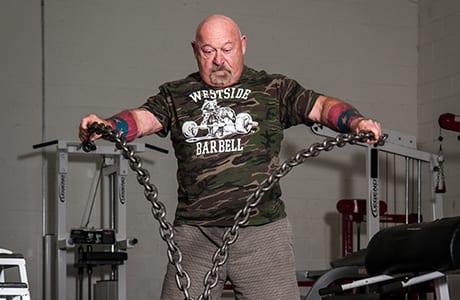May 9th is “Joint Replacement Awareness Day”! It is an opportunity to dispel existing concerns on debilitating traditional joint replacements and fill in the gaps with any questions regarding available joint replacement options.
Read on to learn more about the benefits of our joint preservation implant systems!
Not only do traditional artificial joint replacements limit a person’s range of motion and ability to perform daily tasks, but they also restrict physical activities; for example, cycling, martial arts and weightlifting as well as normal everyday activities like picking up your children. Unlike a traditional total joint replacement, the Arthrosurface® Joint Preservation Systems remove significantly less bone, restore the native anatomy of the joint, and can allow you to resume full activity and live an independent lifestyle!
Shoulder
The idea behind our Shoulder Implant systems is to prevent further damage to the joint while maintaining the patient’s native anatomy, motion and activity level. The shoulder HemiCAP® & OVO/ OVOMotion® with Inlay Glenoid Arthroplasty Systems systems are proven to reduce pain, increase range of motion, and provide patients with their quality of life returned.
6 ways you could be a candidate for our shoulder implant.
- You have an intact / repairable rotator cuff
- You want to regain your active lifestyle.
- Diagnosed with Glenohumeral Osteoarthritis (Shoulder Arthritis), Avascular Necrosis (AVN), Hill-sachs Lesions, and/or Post-traumatic degenerative disease.
- You’ve had previous treatment; such as surgeries or injections, but the pain has returned.
- Lengthy rehabilitation time or excessive time off work is not an option.
- Your surgeon has told you that you will need a shoulder replacement in the future.
Knee

Our joint preservation and restoration implant systems are designed to restore the unique articular surface geometry of the knee while removing significantly less bone and maintaining patients’ native joint anatomy. The PF Wave and WaveKahuna Arthroplasty Systems utilize our inherent inlay technology that matches the shape and contour of your cartilage surface.
A recent study showed, “None of the patients in the inlay group showed progression of tibiofemoral OA. In contrast, the onlay group showed significant progression‚Ķ with 53% of the patients showing progression of medial and/or lateral tibiofemoral OA.” Followed by a study at 5 years with the same results, “At 5 year follow-up‚Ķno significant progression of tibiofemoral OA was observed.”
6 ways you could be a candidate for our knee implant.
- You want to regain your active lifestyle.
- You have Isolated PF Arthrosis and Arthritis, PF Malalignment, PF Instability, Dysplasia
- You’ve had multiple previous knee surgeries
- You’ve already had marrow stimulation treatment or injections, and the pain has returned.
- Lengthy rehabilitation time or excessive time off work is not an option.
- Your surgeon has told you that you will need a knee replacement in the future.
Toe

The Toe HemiCAP® DF implant system can be a great alternative solution to a Toe Fusion or synthetic cartilage implant. For patients suffering from hallux rigidus and/or toe pain, this implant is designed to increase range of motion and allow patients to stay active® while removing only the damaged area of the joint. The Arthrosurface Toe Implant Systems match the shape and contour of each individual patients’ joint surface on the metatarsal side of the toe joint for a proper fit. A contoured cap replaces only the area of damaged cartilage and protects the remaining (healthy) cartilage in the joint.
For those with advanced disease on both sides of the the ToeMotion Implant total toe implant can be utilized. This consists of the Toe HemiCAP® DF implant on the metatarsal side of the joint and a metal baseplate with plastic insert on the opposing (phalangeal) side of the toe joint.
The Arthrosurface Toe Implant Systems restore mobility and provide long-term stability to maintain the native biomechanics of the MTP joint. Benefits include:
- Patients achieved on average 52% of Motion*
- Patients improved their Motion by 189%*
- Inlay Design respects sesamoid tracking surface throughout dorsiflexion
*Sources on File at Arthrosurface
6 ways you could be a candidate for our toe implant.
- You suffer from: Hallux Rigidus, Hallux Limitus, Toe pain or toe arthritis
- Your toe joint is unstable, stiff and/or painful.
- Don’t want to lose the mobility of your joint.
- To maintain the ability to bend your toe, reach up and kneel again.
- The ability to wear normal shoes again; such as high heels or boots.
- You have been told by a surgeon that you will need a toe fusion or synthetic cartilage implant.
What you should know about our systems:
- No activity restrictions.
- Arthrosurface implants are measured to match and fit a patient’s joint size and shape.
- Significantly less bone is removed than a traditional total joint replacement.
- Arthrosurface implants are placed into the joint surface rather than on top, restoring the natural anatomy.
- Rock-Solid Fixation between the Cap & Screw. Loosening is not a concern.
- Inlay Implants (flush with the bone) are inherently more stable than Onlay Implants (sits on top of the bone).
- Performed as an Outpatient Procedure to avoid long hospital stays and large hospital bills. Typical hospital stay is 1 Day or less with Arthrosurface Implants.
- Allows patients to maintain high-level physical activities and lifestyles.
- All Knee Implant Systems leave the ACL, MCL & PCL intact.
- Shortened Recovery Time means less time out of work and getting your life back sooner.
Learn More!
Want to locate a physician in your area? Try our Find the Dr Tool or Contact Us for more info!




